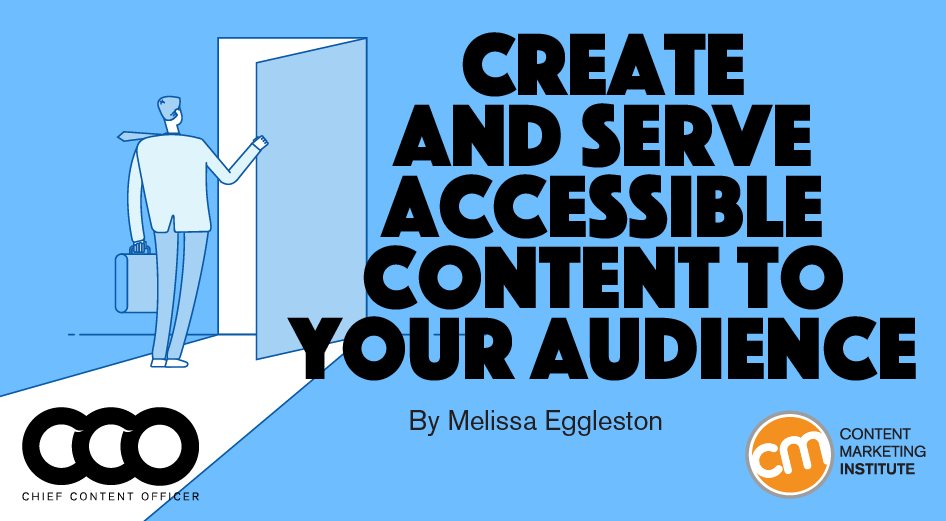
A version of this article first appeared in CCO magazine in October 2019.
How might you change the content on your website if your audience was likely to view it while under great stress, in 90 seconds, on a mobile device, off the highway in a gas station bathroom?
Nonprofits helping domestic violence and sex trafficking survivors face this challenge. They must ask:
- Does this homepage image slow the site’s download speed too much?
- Are the phone links one touch to call?
- Is the text easy to read when the reader is rushed and stressed?
- Is the most relevant content unmissable?
Fortunately, the extra time spent meeting the needs of this audience likely creates a better experience for all who visit the site.
You’ve probably benefited from the mid-20th century urban planning innovation called “curb cuts.” Designed to help people in wheelchairs, these sidewalk ramps make life a little easier for so many people. Parents avoid jostling sleeping babies in strollers, delivery people easily push their rolling carts, and travelers can smoothly wheel their bags to and from the sidewalk.
Just like curb cuts, accessible content benefits a wider audience than you probably realize.
Accessible #content benefits a wider audience than you probably realize, says @melissa_egg, via @CMIContent. #Accessibility Click To TweetWalk in your audience’s shoes
Though you care fervently about your content, it may occupy only a small (hopefully important) moment in the busy lives of others. Here are some ways to make those moments matter for more people.
Lower your expectations
I’ve conducted or watched hundreds of usability tests in my career, asking participants to perform tasks on a website, app, or other digital system. It’s stunning how much people miss, skip, and/or ignore even when I’m paying them to complete the tasks while our team watches. Increasingly, audiences’ attention seems scattered even when they focus.
Use the inverted pyramid style of writing to get important ideas first in your copy. Choose easily understood graphics. Produce short, to-the-point videos.

Prioritize and provide extra care for special audiences
You should know which persona(s) your content is for and which persona group is your highest priority. When I worked on a domestic violence-related website, we always prioritized the survivors’ needs. Yes, we hoped donors and others would get our messages too, but they were less important user groups.
Providing a trauma-informed website or reaching English as a second language (ESL) learners requires more attention than normal. Think carefully about your audience members. What is unique about them? What do they worry about? What language and words do they use among themselves? Are they marginalized in any way? This is where accurate, data-informed personas can help you remember goals, behaviors, mindsets, and context.
Ensure that everybody on your content team understands the nuances of the audience. For example, a trauma-informed website would be careful to avoid using potentially triggering photos or videos. An app catering to a large ESL population would use direct phrases, not idioms. The more your team understands the audience and relevant context, the more likely your content will succeed.
Ensure that everybody on your #ContentTeam understands the nuances of the audience, says @melissa_egg, via @CMIContent. Click To TweetPlan for everyone if necessary
If you work for the government or a hospital – or any other business serving the general public – you may be thinking, “But everyone is my audience.” You may find yourself needing to plan for a huge range of people and their needs.
Past thinking assumed that accommodating about 80% of your audience was sufficient. But that’s still one in five people turned away by your content. Will you tell the boss, or will I?
A more modern and inclusive approach suggests that if you cover your extreme cases, you’ll take care of everyone.
Again, your personas come into play here. Do you have a persona that represents the user group with poor vision or shaky hands or low technical understanding? Do you also have a persona for a young software engineer with high expectations? And can you keep both in mind as you develop content?
Test your content
How do you know if your content will reach its audience goals? Find representative members of the audience and test the content with them. This is an ideal way to discover how accessible your content really is.
Test your #content with representative members of the audience to ensure accessibility, says @melissa_egg, via @CMIContent. #Accessibility Click To TweetFind people in that audience group
You need to speak with people with representative goals and situations. If that’s impossible, you may have to use people as proxies who know the group well. It’s not ideal, but testing with people with some relevancy is better than not testing at all or testing with co-workers.
Standard usability testing with tasks and questions related to content tells you a ton. This is a perfect place to start with your website or app. You also can test a competitor’s content for direction and to avoid missteps.
Standard usability testing for #content tells you a ton, says @melissa_egg, via @CMIContent. #Accessibility Click To TweetThink of the questions you have about the content: “Will they understand that this is for harried 40-something parents?” Then, craft tasks and questions to try to get at the answers: “Who do you think this is for?”
I once tested the functionality of a yoga studio website. (Example task: “Sign up for a class.”) I quickly discovered that research participants felt intimidated by the images of fit and beautiful people on the site.
Test whenever you have content
You can learn a great deal even when your content is rough. Your goal is to have no surprises – to avoid launching content that misses the mark. Learn early so you have time to adjust. This might mean printing text on a piece of paper and asking people to highlight sentences that aren’t clear. Perhaps show a photo you plan to use and ask what words come to mind. Are those the words you and your brand are hoping for? Ask relevant audience members to review the rough cut of a video before it is finalized.
Patterns can emerge after testing with only a few people in your audience. This isn’t the type of academic, peer-reviewed, quantitative research that requires statistical significance. Facebook, Microsoft, Lenovo, and many other organizations conduct qualitative research with small groups of people, so you can too.
Where to begin
According to U.S. Census data, more than 25% of the U.S. population lives with a disability. Even if you aren’t one of these people, consider how often you might not be functioning at 100%. Think about exhausted parents, hungover co-workers, or people stuck in a hospital with a sick family member. What about anyone dealing with a terrible breakup or any of life’s other curve balls? Everyone functions poorly at times. Don’t make people work any harder than necessary to benefit from your content. They should be able to experience it with as little effort as possible in the way they want to.
Your #content shouldn’t make people work harder than necessary to benefit, says @melissa_egg via @CMIContent. #Accessibility Click To TweetAsk the right questions and remember the answers
Who are your audiences? What are their behaviors and goals? Do any of them have disabilities or special challenges? Why might they be interested in your content? What kind of experience are they looking for from you? To escape? To get smarter? To do something for themselves? It’s easy in the middle of a project to forget the main goals of your audience. Write them into any project brief and keep them on a highly visible whiteboard or sticky note.
HANDPICKED RELATED CONTENT:
Learn basic accessibility guidelines
The Web Content Accessibility Guidelines (WCAG) can help you understand the minor tweaks your content needs to be accessible to everyone in the audience, from video captions and audio to error messaging and use of color.
Need motivation? Run your website through a free screen reader. The first time a co-worker and I did this for a computer e-commerce website, it was just awful. We wanted to cry in sympathy for any visually impaired person attempting to buy a computer on our website. It motivated us to get our company up to speed on accessibility. Note that Apple’s iOS and macOS have a built-in screen reader called VoiceOver (switch it on in system preferences), while Microsoft Windows includes a similar screen reader called Narrator.
Work accessibility into your process
Set expectations with your collaborators (designers, videographers, writers, etc.) that all content must be accessible. Insist on alt-descriptions on images – text within the HTML code so that screen readers can describe the image. Make sure captions and transcripts are part of the videographer’s work. Make sure text is easily legible. Remember that your colorblind viewers don’t use color as the only way to convey important information.
Set expectations with your designers, videographers, writers, etc. that all #content must be accessible, says @melissa_egg via @CMIContent. #Accessibility Click To TweetTalk to the developers to make sure they are coding in an accessible way. This includes things like unique labels for form elements, clickable phone numbers, and speed. Want a surefire way to improve the experience of your content? Speed up your content load times. Snappy websites and apps please all audiences.
HANDPICKED RELATED CONTENT:
Make text more readable
The worst web writer I ever worked with had been in the Stanford doctoral English program. Compound-complex sentences suck to read online. Chop them up. Your text needs to be at a sixth-grade reading level or lower. Dump the postgraduate level sentences. Use Hemingway Editor (free) to help you use plain language and shorten sentences. Other tips:
- Ensure that your font is sufficiently large and supports text resizing.
- Align text on left for a consistent and easier read.
- Use the WebAIM Color Contrast Checker to see if text is readable against the background color.
- Test your text. Don’t make assumptions and hope for the best.
HANDPICKED RELATED CONTENT:
Produce user-friendly video
Some people love videos, while others know videos are a forced linear form of content. “Really? I have to watch this? How long is this?” Give those people an alternative way to access the information. This is especially important in informational and how-to videos. Offer a transcript and include time stamps so people can jump to the parts of the video most important to them (lynda.com is a great example). Add captions and audio descriptions to help not only visually and hearing-impaired people but also those who need to watch with the sound muted (imagine people around sleeping babies, on public transportation, or in a multi-person home office without headphones).
Make sure your audience:
- Wants to watch videos
- Has sufficient bandwidth to watch videos
- Knows how to use the video player successfully
- Can access the information in the video in other ways
- Understands the language in the video (or translate to their native language)
Be an accessibility leader
In the United States, organizations that receive government funding and/or offer public accommodation may be required to have accessible websites. Recent court rulings indicate that the Americans with Disabilities Act can be applied to websites of private companies as well (see Gil vs. Winn-Dixie Stores Inc).
In the long run, accessible websites will become the standard. For now, being a leader on accessibility benefits you by broadening your reach to as many people as possible. Who doesn’t want more people consuming their content?
A version of this article originally appeared in Chief Content Officer magazine. All tools mentioned are suggested by the author. If you have a tool to suggest, please add in the comments.
Cover image by Joseph Kalinowski/Content Marketing Institute

